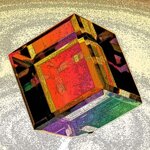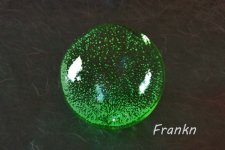The gold glinting on your wedding band was likely born in a cataclysmic merger of two exceedingly exotic stars, astronomers report Wednesday.
Dying stars billions of years ago cooked up most of the lighter elements in the universe, the oxygen in the air and calcium of our bones, and blasted it across the cosmos in their final explosive moments. We are stardust, as the singer Joni Mitchell put it.
But some of the heaviest atoms, including gold, defied this explanation, requiring an even more exotic origin.
A team led by Harvard astronomer Edo Berger now reports that gold is likely created as an effect of the collision of two “neutron” stars. Neutron stars are the collapsed remains of imploded stars, incredibly dense stellar objects that weigh at least 1.4 times as much as the sun but are thought to be less than 10 miles wide.
Read more: Scientists explain origins of gold | TribLIVE
Dying stars billions of years ago cooked up most of the lighter elements in the universe, the oxygen in the air and calcium of our bones, and blasted it across the cosmos in their final explosive moments. We are stardust, as the singer Joni Mitchell put it.
But some of the heaviest atoms, including gold, defied this explanation, requiring an even more exotic origin.
A team led by Harvard astronomer Edo Berger now reports that gold is likely created as an effect of the collision of two “neutron” stars. Neutron stars are the collapsed remains of imploded stars, incredibly dense stellar objects that weigh at least 1.4 times as much as the sun but are thought to be less than 10 miles wide.
Read more: Scientists explain origins of gold | TribLIVE








